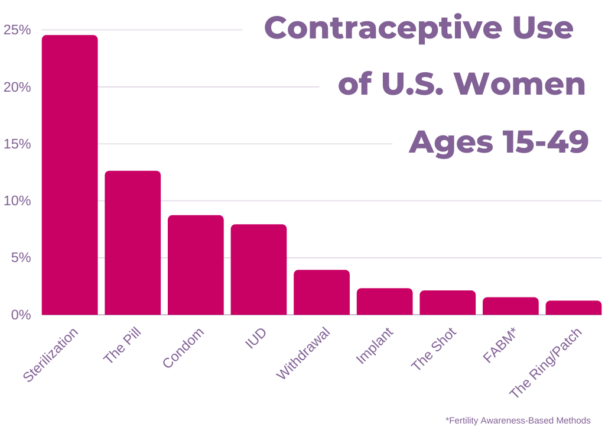
Contraceptive Use in the United States
People of all genders need access to birth control. Trans and non-binary people often face not only the effects of policies to limit birth control coverage, but also are consistently left out of conversations about birth control access. The studies below identifies their participants as women.
The CDC’s most recent data indicates:
- Nearly 65% of women aged 15–49 in the U.S. currently use contraception.
- Condom use is lowest among teens (5.3%) and women in their 40s (5.2%).
- Long-Acting Reversible Contraception (LARCs), including IUDs and implants, are most commonly used by women in their 20s and 30s (13.1% and 11.7% respectively) and least used by women in their 40s (6.7%).
Contraceptive Use and Unintended Pregnancy
It is estimated that nearly half of all pregnancies worldwide are unintended. According to the Guttmacher Institute, almost a quarter of all women living in developing countries who want to avoid pregnancy aren’t using modern methods of contraception. Of these 214 million women, 155 million aren’t using any form of contraception, accounting for 74% of unintended pregnancies in developing regions. If the current unmet need for modern contraception in developing countries were to be filled, estimates predict there would be 76,000 fewer maternal deaths every year.
In the U.S., the majority of women of reproductive age actively use some form of contraception, yet nearly half (45%) of all pregnancies in the U.S. each year are unintended. Effectiveness of different forms of contraception varies. Additionally, with some methods, there can be a dramatic difference in effectiveness based on if the user is implementing “perfect use” and “typical use” of the method. For example, condoms have a “perfect use” failure rate of only 2%; however, when examining how condoms are typically used, that rate jumps up to 13%.

